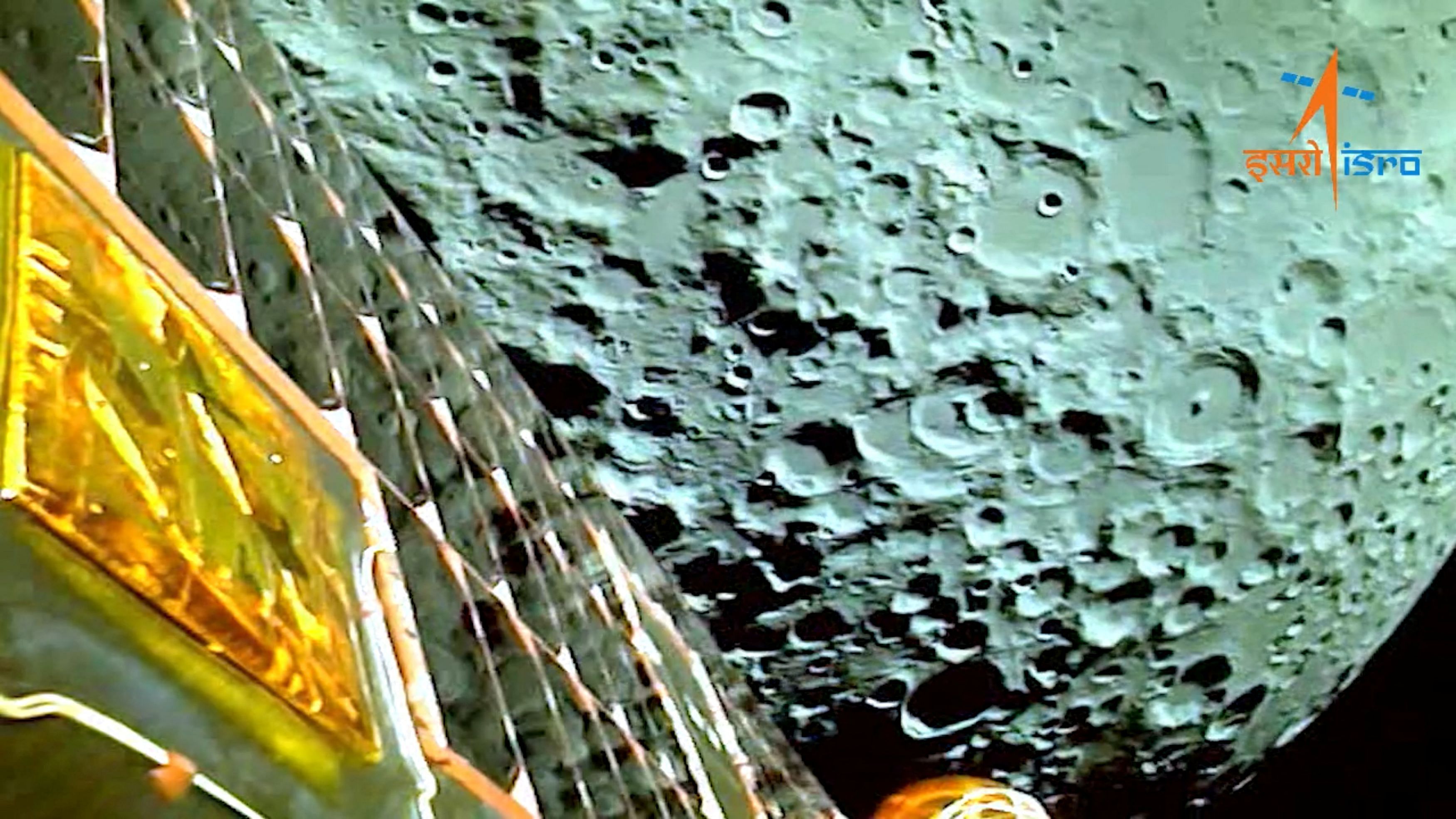
A view of the moon as viewed by the Chandrayaan-3 lander.
Credit: Reuters/ISRO
Even as the whole country awaits the touchdown of Chandrayaan-3's lander module on the Moon, ISRO scientists still have a lot left to do after the landing.
The scientists have their job cut out for them as, after the landing, they will be tasked with operating the Pragyan rover for one lunar day (14 Earth days) and also analysing the data from the instruments on board the lander.
So what will the lander and rover do once they are on the surface of the Moon? According to a report by TOI, after the Vikram lander touches down at 6:04 pm on Wednesday, a side panel of the lander will unfold and a ramp will open up for the Pragyan rover. The rover will then roll down from the lander's belly on to the lunar surface and use its cameras to scan the surroundings. The rover, which has India's tricolour and the ISRO logo implanted on its wheels, will leave behind imprints on the 'soil' of Moon, also known as lunar regolith.
The rover, fitted with instruments to gather data related to the Moon's surface is expected to collect data on the elemental composition of the lunar atmosphere. It will also measure the near surface plasma (ions and electrons) density, carry out measurements of thermal properties of the lunar surface, measure seismicity around the landing site and delineate the structure of the lunar crust and mantle, the report said.
The lander, which runs on solar energy, will have 14 days to study the Moon's surface. The rover's only communicator is the lander, which transmits data to the Earth. The lander module on Monday also established communication with the Chandrayaan-2 orbiter, which can also be used as a contingency communications relay, the report added.
On Monday, ISRO Chairman S Somanath briefed Minister of State, Space, Jitendra Singh, on the mission’s progress. He said all systems were working "perfectly" and no contingencies were anticipated on the day of the landing.
Interestingly, ISRO has chosen to land Chandrayaan-3 near the same spot where its predecessor Chandrayaaan-2 had attempted to make a soft-landing.
If things go as planned this time, Chandrayaan-3 will become the first-ever lunar mission in the world to make a soft-landing on the south pole of the Moon. Till now, all the spacecraft have landed either on the lunar equator or a few degrees latitude south or north of the equator. The polar region of the Moon is a very difficult terrain. Some areas of it lie in total darkness where even a speck of sunlight has never reached. It is so cold that the temperatures go as low as -230 degree Celsius. This pitch darkness and extreme cold weather makes functioning of electronic instruments excruciatingly challenging.
Besides, extreme cold temperatures in the south pole also indicate the fact that anything that's found in this region would have remained frozen and preserved for millions of years. Hence, the soil and rocks from this region of the Moon could provide us the leads to the early solar system.